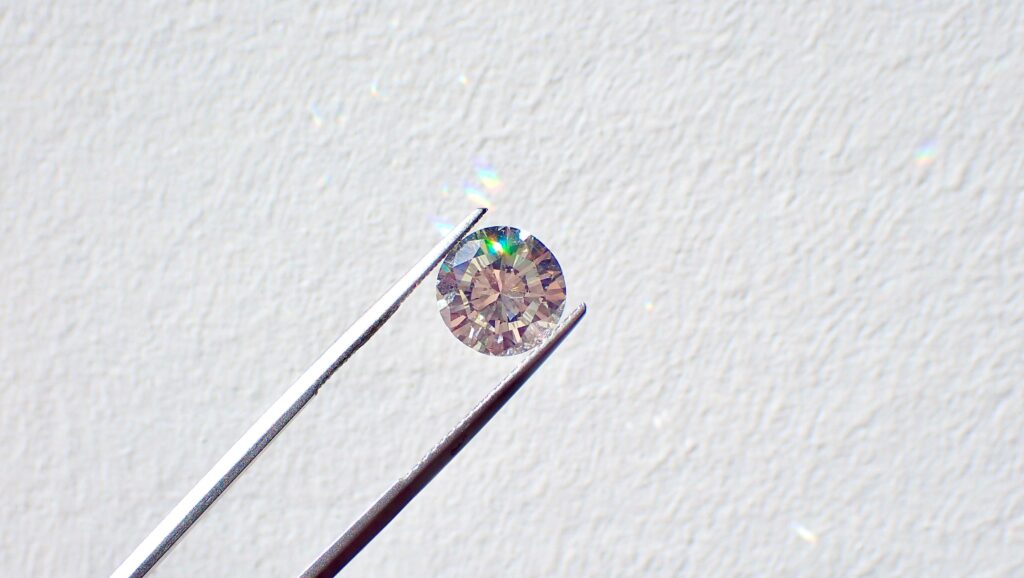Lab-Grown Diamonds vs. Real Diamonds: The Trend Shaping the Future of Jewelry
The jewelry industry is witnessing a fascinating shift as consumers increasingly consider lab-grown diamonds alongside their natural counterparts. This trend, driven by ethical considerations, environmental impact, and affordability, is reshaping the landscape of luxury jewelry. But how do lab-grown diamonds compare to real diamonds, and what should buyers know before making their choice? Here, we explore the key differences, benefits, and considerations between lab-grown and real diamonds.
What Are Lab-Grown Diamonds?
Lab-grown diamonds, also known as synthetic or cultured diamonds, are created in controlled laboratory environments using advanced technological processes that mimic the natural diamond formation. These diamonds have the same physical, chemical, and optical properties as natural diamonds, making them virtually indistinguishable to the naked eye.
The Appeal of Lab-Grown Diamonds
- Ethical and Environmental Considerations:
- Sustainable Production: Lab-grown diamonds are often promoted as a more sustainable option. The process of creating these diamonds generally has a smaller environmental footprint compared to the traditional diamond mining, which can lead to significant ecological disruption.
- Conflict-Free Guarantee: Lab-grown diamonds are guaranteed to be conflict-free, addressing the ethical concerns associated with “blood diamonds” that fund armed conflict and human rights abuses in certain mining regions.
- Affordability:
- Cost-Effective: One of the most attractive aspects of lab-grown diamonds is their price. On average, lab-grown diamonds can be 30-40% less expensive than natural diamonds of similar quality. This cost-effectiveness allows consumers to purchase larger or higher quality stones within their budget.
- Quality and Availability:
- High Quality: Advances in technology have made it possible to produce high-quality lab-grown diamonds with fewer impurities. These diamonds are available in a wide range of sizes, colors, and cuts, offering more options for customization.

The Timeless Allure of Real Diamonds
- Natural Origin:
- Unique Formation: Natural diamonds are formed over billions of years under extreme pressure and heat deep within the Earth’s mantle. This natural process makes each diamond unique, adding a sense of rarity and wonder to each stone.
- Historical Value: Real diamonds often come with a rich history and a sense of legacy, as many have been passed down through generations, enhancing their sentimental and intrinsic value.
- Market Perception and Value:
- Investment Potential: Natural diamonds have historically been seen as a valuable investment. While the market can fluctuate, high-quality natural diamonds often retain or appreciate in value over time.
- Prestige and Tradition: There is a longstanding cultural and social prestige associated with natural diamonds. For many, owning a real diamond is a symbol of status and tradition that lab-grown diamonds have yet to fully replicate.
Key Differences: Lab-Grown vs. Real Diamonds
- Origin:
- Lab-Grown: Created in a laboratory using high-pressure, high-temperature (HPHT) or chemical vapor deposition (CVD) processes.
- Real: Formed naturally over billions of years in the Earth’s mantle.
- Cost:
- Lab-Grown: Typically 30-40% less expensive than natural diamonds.
- Real: More expensive due to their natural origin and market demand.
- Environmental Impact:
- Lab-Grown: Generally have a lower environmental footprint, though energy consumption in labs can still be significant.
- Real: Mining can cause significant environmental disruption and habitat destruction.
- Ethical Concerns:
- Lab-Grown: Guaranteed conflict-free.
- Real: Potential ethical concerns with conflict diamonds, though many companies now adhere to the Kimberley Process to ensure ethically sourced diamonds.
Making the Right Choice
Choosing between lab-grown and real diamonds ultimately comes down to personal values, budget, and the intended significance of the purchase. Here are a few considerations to help guide your decision:
- Budget: If cost is a significant factor, lab-grown diamonds offer a budget-friendly alternative without compromising on quality or appearance.
- Ethics and Sustainability: For those concerned with environmental impact and ethical sourcing, lab-grown diamonds provide a more sustainable and conflict-free option.
- Tradition and Investment: If you value the historical significance, potential investment value, and traditional prestige associated with natural diamonds, a real diamond might be the preferred choice.
Conclusion
The debate between lab-grown and real diamonds is shaping the future of the jewelry industry, offering consumers more choices and greater transparency. Whether you opt for a lab-grown diamond with its ethical and cost benefits or a natural diamond with its unique history and market value, both options present their own unique set of advantages. As the trend continues to evolve, the most important factor remains finding a diamond that resonates with your personal values and preferences, ensuring that your investment is not just in a stone, but in a meaningful and lasting symbol.